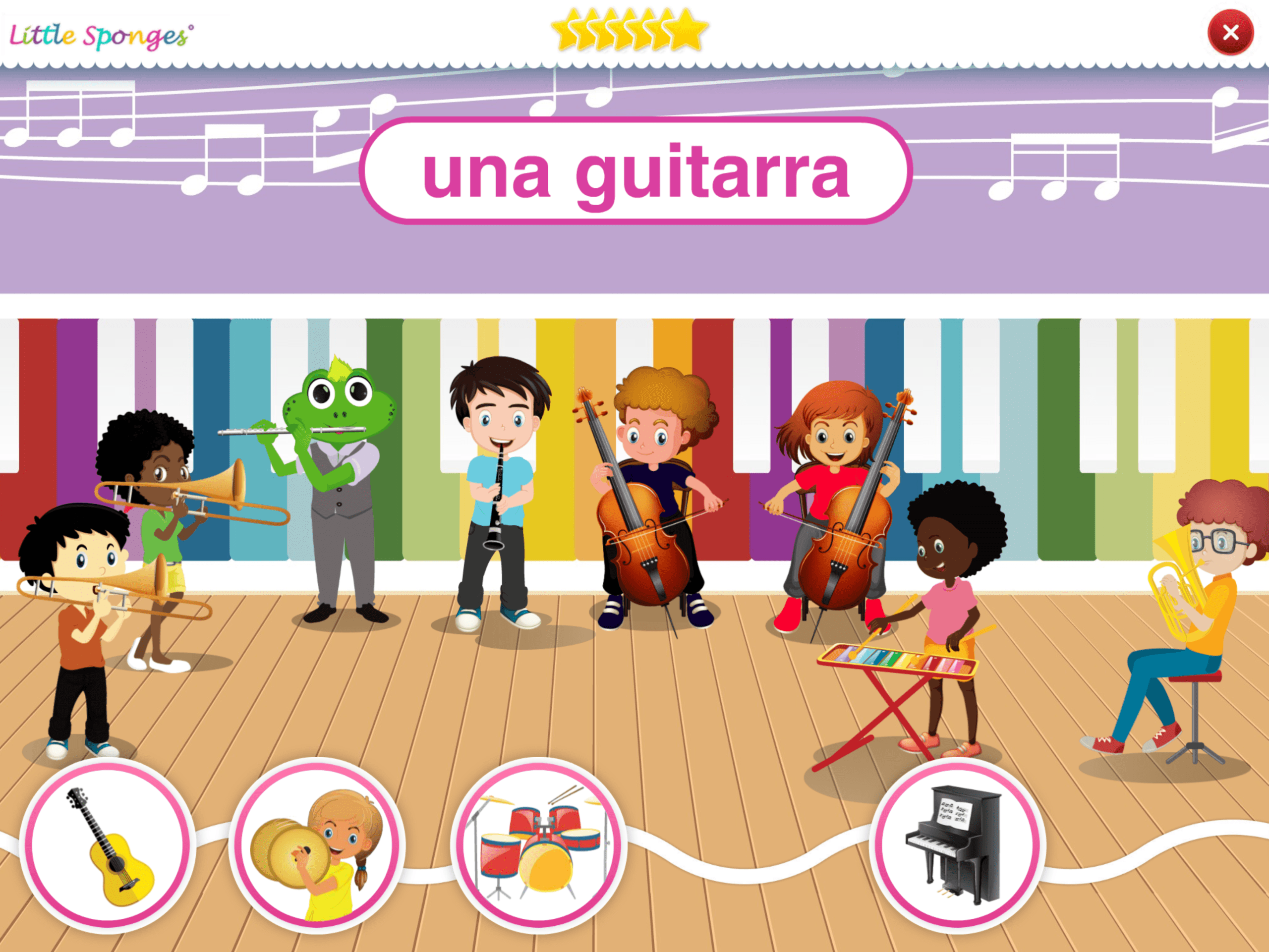Does your school district have a growing percentage of Dual Language Learners or English Language Learners? You’re not alone.
According to an NEA Policy Brief, by 2025 nearly 25% of all students in public schools will be English Language Learners, the fastest-growing student population group.
Even today, 32% of children under 8 years old are dual language learners. From 2000 to 2017, the young dual-language-learner population has increased from 8% to 32% in the United States. With these dramatic increases, it is imperative that the educational community implements appropriate instructional practices for ELL and DLL students.
Little Sponges® is passionate about helping all students achieve success. Without early intervention, English Language Learners are more likely to fall behind their peers academically, which can be detrimental to their future academic success. We have compiled a list of 10 best practices that will help you be a great teacher for your ELL and DLL students. These practices work very well for monolingual students as well so all of your students will benefit from these techniques.
1. Provide Explicit Instruction
Be sure to guide the learning process, pause frequently and clearly explain new concepts to your students. The beauty of an online, on-demand program is that you can pause the video or game at any point to expand on it, do a demonstration, or ask a question to enrich the learning experience.
This is an especially important step for the English Language Learners in your classroom. Be sure to take into account student’s prior knowledge and experiences. Remember, on top of learning the grade appropriate material, they’re also learning two languages simultaneously.
2. Use Mnemonic Devices
We recommend utilizing a variety of mnemonic devices as you work with your ELLs and DLLs. A mnemonic is an instructional strategy designed to help students improve their memory of important information. This technique connects new learning to prior knowledge through the use of visual and/or acoustic cues.
The Little Sponges® program does this a few different ways.
The use of multimedia cues is a type of mnemonic strategy. When a child is able to see a real-life image or video while hearing the word, they are more likely to remember that vocabulary word.
The Little Sponges® videos take this a step further by adding literacy subtitles through the learning videos and reviews. While learning the new language, students are able to compare the foreign language word to what they already know in their native language. Take the word “elephant” in English for example. In Spanish, elephant is “un elefante.” The similarities are obvious when the words are seen side by side. Children naturally note the similarities between the two languages, and store the information for future use. Later, if they’re conversing in Spanish and need to recall the word elephant, they are able to remember that the Spanish word sounds similar to the English word.

Another example of how Little Sponges® uses mnemonic based learning is teaching through songs. As everyone knows, children love to sing, which is why Little Sponges® program integrates bilingual songs in its content.
By integrating music and songs into the lessons, children learn without knowing that they’re learning. The lyrics (i.e. vocabulary) of the song become ingrained into the child’s memory, and lend themselves to everyday conversation.
3. Check for Comprehension
Make sure that you stop periodically to ensure that your students are following and understanding your lesson. If an English Language Learner becomes overwhelmed by the English-dominated lesson, their brain may shut itself off from any further learning.
The Little Sponges® interactive games and review videos are great tools to help you gauge how much a student is learning from your lessons. If the student is able to get 80% – 90% of the questions correct in the game, you know that they’re comprehending most of the material. If they’re only scoring 70% or below, you may want to revisit the material with that student in an individualized setting.
4. Give Time to Process
When a child is working on becoming bilingual, they may need more time to answer questions that are not in their native language. If they comprehend your question in English, the answer may pop into their head in Spanish first. They will need time to translate the word into the spoken language before answering your question. It is recommended that you give the student 3 – 5 seconds to think about their answer after you ask the question.
In the Little Sponges® review videos, you will notice that both Mishka and Frog pause for a few moments before offering the answer. This allows students to answer the question themselves, before having Mishka and Frog reveal the answer to them.

5. Use Body Language
When working with children who lack oral proficiency, visual communications such as thumbs up and head nods are effective modes of communication. Allow students to respond with hand gestures and signals in addition to verbal responses. This will give students who are behind in their oral language skills more confidence as they are still able to communicate and participate with the class.
6. Encourage Collaboration
When grouping children for classroom activities, try mixing children with different language abilities. This allows students to share their knowledge and help their peers, thus creating a safe sense of community.
Native English speakers will be able to help their friends who are still learning English, and the ELL students can help their native English-speaking peers with their foreign language skills.
Utilize your projector or smart board to play the Little Sponges® interactive games as a class. Let children show their knowledge in their native language by allowing them to choose the answer in front of the class.

7. Provide A Lot of Repetition
Although repetition is the key to learning new vocabulary, it is unrealistic to assume that a teacher will repeat a vocabulary word ten times while keeping students engaged, especially if the teacher is not bilingual. When the students are learning with Little Sponges®, that repetition comes naturally in the form of storytelling. In the learning videos, vocabulary words are repeated, often once in a sentence and once by itself. Encourage your students to say the words out loud as they watch the videos.
After watching the main learning videos, students are exposed to these vocabulary words more in the interactive games and review videos. As children play the games, they strive to collect all ten stars, which entices them to play the game over and over, thus hearing a vocabulary word five or six times in a short period.
Click here to try one of our fun, interactive games in Spanish!
8. Give Multiple Modes of Representation
Allow your students to receive information and vocabulary from different sources. By following the recommended order of Little Sponges® material, students are exposed to vocabulary words in various contextual situations.
- Adventure Video: Within each of our adventure videos, vocabulary is repeated more than once. Usually, the word is said by itself and then in a sentence. This allows children to build their vocabulary foundation, but also to hear the word used as they would in real life.
- Comprehension Game: Our interactive games are set up in a way that allows students to “build” an interactive scene, right before their eyes. After audio of the vocabulary word is heard, students must then choose the correct answer from the picture bank at the bottom of the screen.
- Teacher and Vocabulary Flash Cards: A set of 300 vocabulary cards is included when you buy the Little Sponges® program. These vocabulary cards have a beautiful image on the front, and the words on the back. Teachers can easily create a game with their students by using these cards with the class. For items within the classroom (ie. pencils, books, chairs), ask the students to say the word in the target language then find the item in the classroom.
- Review Video: Though the Little Sponges® review videos do not cover all material in the adventure video, students love to answer Mishka and Frog when they ask about a certain item from the corresponding adventure. As students progress through the program, the difficulty of the review questions increases. Rather than showing a picture of a swing and asking “What is this?” Misha and Frog are asking “What is the biggest planet in our solar system?”
- Literacy Game: Once the student has a good grasp on speaking the language, they must practice reading the language. Similar to the comprehension game, students build an interactive scene, but instead of hearing the vocabulary word play automatically, they must first read the word and select the correct answer before the audio plays.
By providing students with different ways to experience and practice new vocabulary, you are helping them build their active vocabulary foundation and improve communication and literacy skills.


9. Use Multimedia
Research shows that multi-sensory input is much more memorable than input that only engages one of our senses. ELLs/DLLs are faced with enormous amount of new information every day as they learn vocabulary and concepts in two languages. Presenting information in a way that engages multiple senses is going to lead to not only better comprehension but also faster learning for your students. By utilizing the Little Sponges® adventure videos, the students are shown real-life visuals, combined with audio of native speakers and literacy subtitles in both languages. This allows students to not only hear the vocabulary word, but to take in the written word as well.
By using beautiful, real-life videos, you are giving students the tools to connect the vocabulary that they are taught in class to what they see in their day to day lives, both inside and outside of the classroom, making your instruction more impactful.
Encourage your students to repeat the words they hear in the adventure videos out loud and mimic what Mishka and Frog are doing on the screen. By engaging multiple senses while learning, students are more likely to remember the material they are being taught.
10. Engage the Parents
Encourage family involvement by communicating with parents and siblings. The Little Sponges® program can be used on any device, and is a perfect tool for parents to utilize at home to help their children. This ensures that the child isn’t leaving their English learning solely at school. Many ELL students’ parents do not speak English, so they will resort to only speaking their native language at home. And while the Little Sponges® program was created with children in mind, parents and older siblings can learn another language from our program as well!
